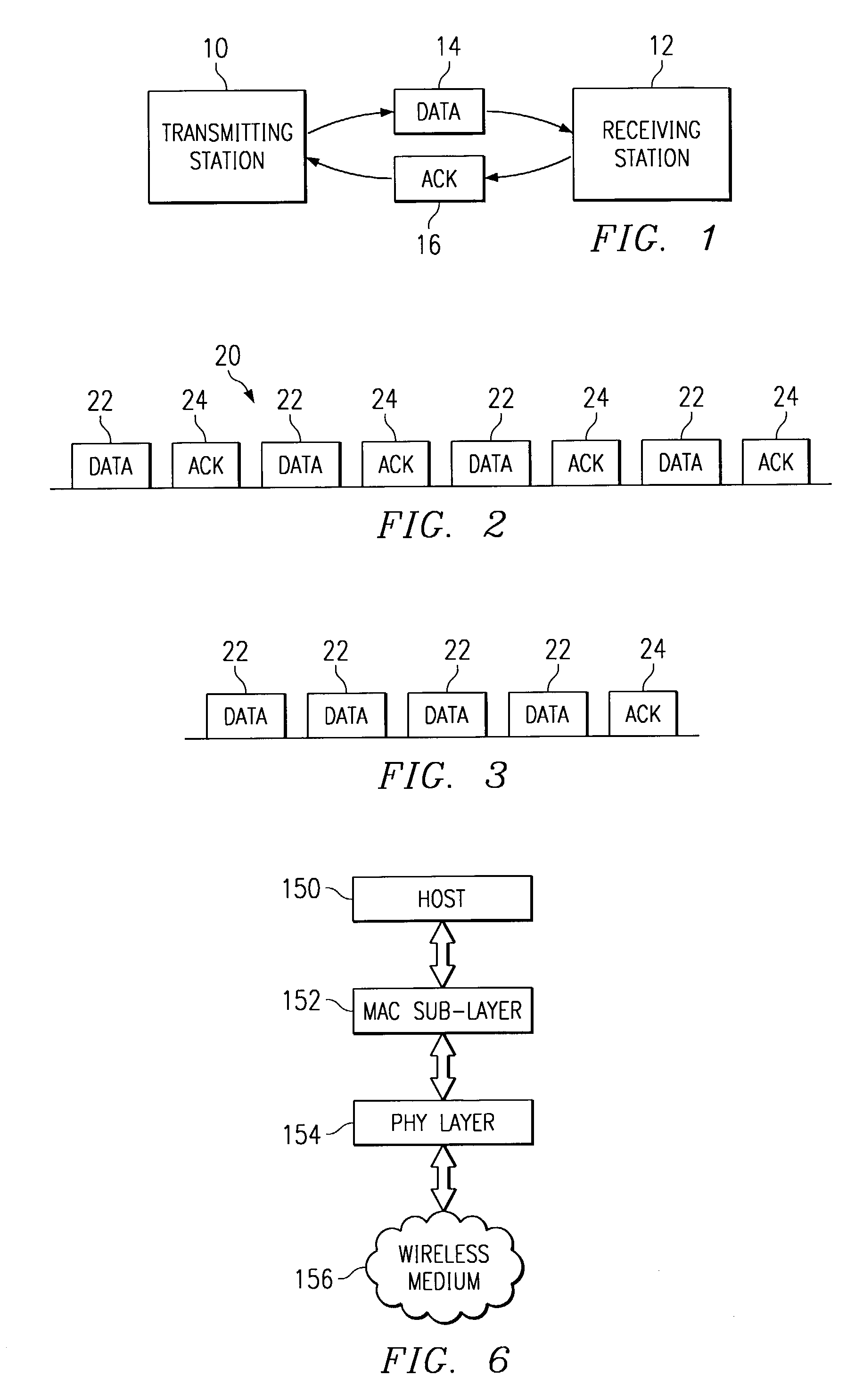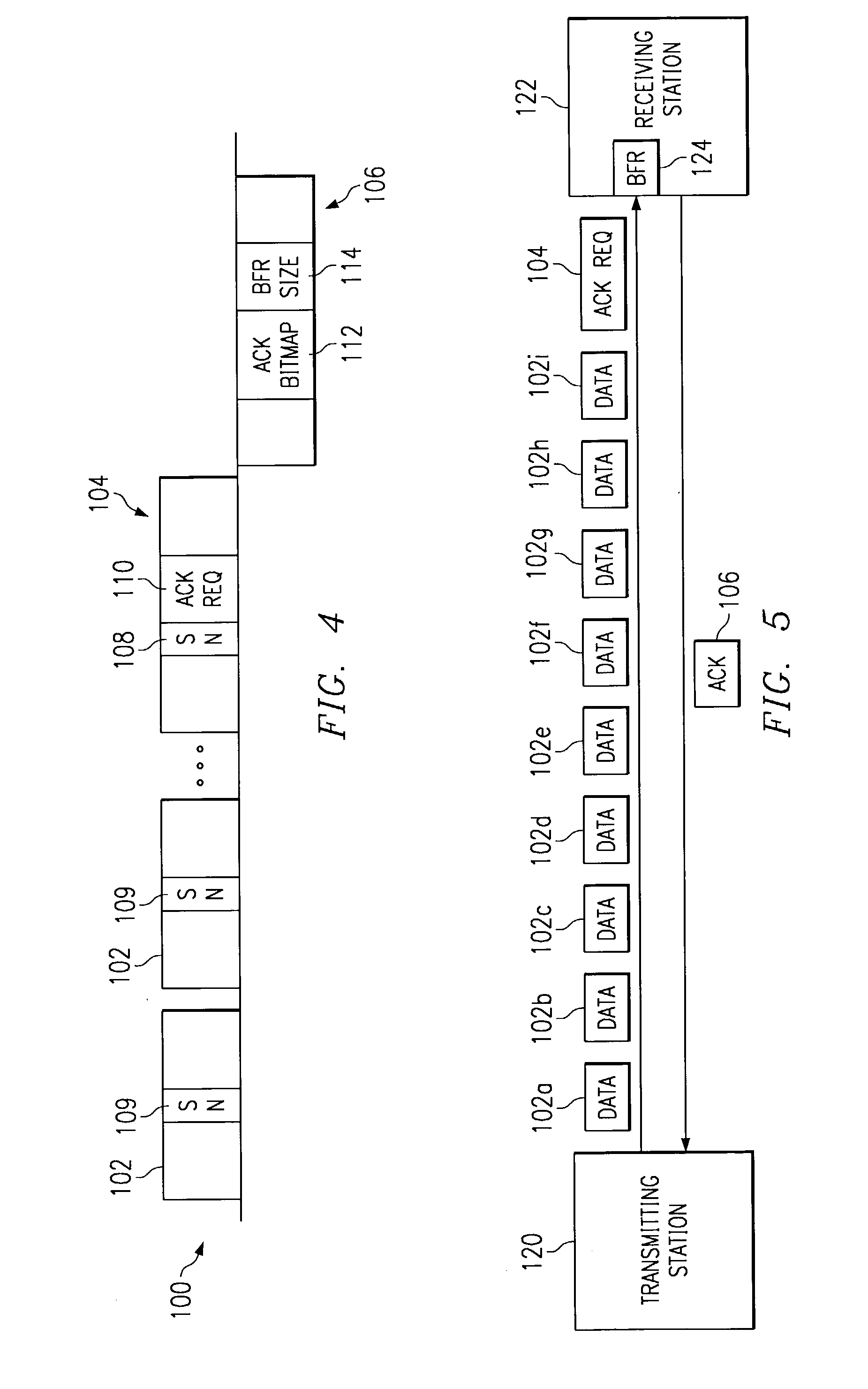Method and system for group transmission and acknowledgment
a group transmission and group acknowledgment technology, applied in the field of data communication, can solve problems such as transmission errors, acknowledgement itself falling victim to some sort of transmission error, and original data frame may not have been received by the receiving station
- Summary
- Abstract
- Description
- Claims
- Application Information
AI Technical Summary
Problems solved by technology
Method used
Image
Examples
Embodiment Construction
[0017] The preferred embodiments of the present invention solve the problems noted above by the implementation of a group acknowledgment scheme which permits a specified subset of a previously transmitted group of data frames to be acknowledged. In accordance with the preferred embodiment of the invention, a transmitting station sends a plurality of data frames to a receiving station and requests a single acknowledgment frame from the receiving station, rather than an acknowledgment after each data frame. Further, the transmitting station's group acknowledgment request frame specifies or otherwise indicates which of the previously transmitted group of frames should be acknowledged. The group acknowledgment may apply to the entire group of frames, some but not all of the frames or just a single frame. The transmitting station may not request acknowledgement for a frame that it does not intend to transmit or retransmit, even if the frame was not received correctly by the receiving sta...
PUM
 Login to View More
Login to View More Abstract
Description
Claims
Application Information
 Login to View More
Login to View More - R&D
- Intellectual Property
- Life Sciences
- Materials
- Tech Scout
- Unparalleled Data Quality
- Higher Quality Content
- 60% Fewer Hallucinations
Browse by: Latest US Patents, China's latest patents, Technical Efficacy Thesaurus, Application Domain, Technology Topic, Popular Technical Reports.
© 2025 PatSnap. All rights reserved.Legal|Privacy policy|Modern Slavery Act Transparency Statement|Sitemap|About US| Contact US: help@patsnap.com



